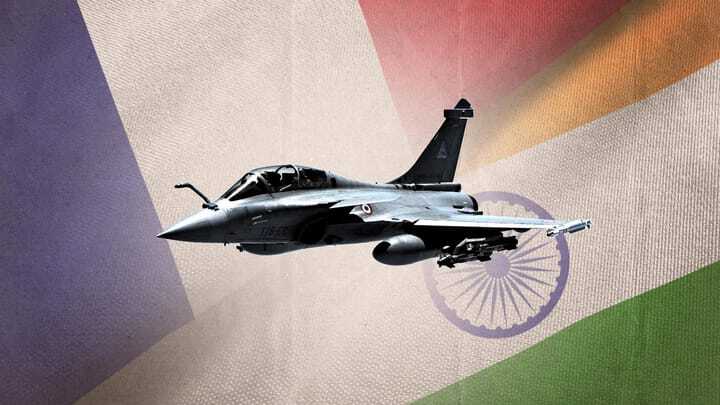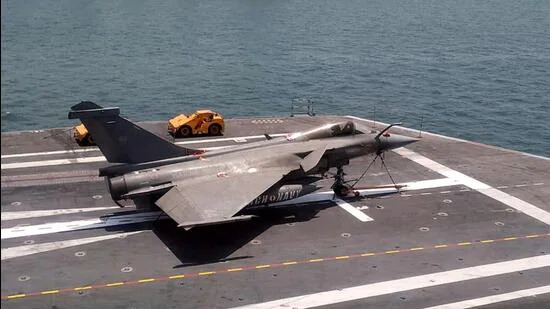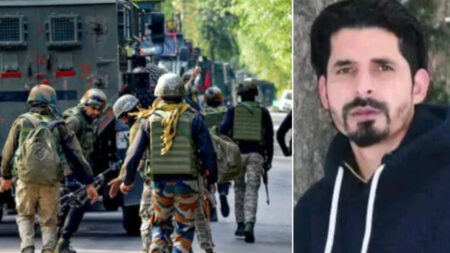The Defence Acquisition Council (DAC) is scheduled to meet and approve a deal to outfit Indian Navy aircraft carriers with Rafale Marine planes before Prime Minister Narendra Modi’s visit to France.
The agreement to buy 18 to 26 Rafale-M fighters for the Indian Navy would be between the two governments, like the 36 aircraft purchased for the Indian Air Force.
A further boost for the Indian Navy will come with the announcement of a contract for the construction of three more Kalvari-class (Scorpene) submarines with French assistance.

In the fields of defense acquisition and marine security, both nations are anticipated to strengthen their collaboration.
The Kalvari class of submarines, which would provide the navy’s underwater warfare capabilities a powerful boost, will be built by Mazagon Dockyards Limited (MDL).
The navy already has six Kalvari class submarines, five of which are on active duty. The sixth, Vagsheer, is now undergoing sea trials before being commissioned.
Prior to Prime Minister Modi’s departure for Paris, the final decision is most likely to be made during the Defence Acquisition Council meeting on Wednesday, July 12 in France.
The acquisition of fighter jets will be expedited by using a government-to-government agreement rather than a tender process.
The Rafale-M fighters are expected to be less expensive than the ones currently in the Indian Air Force’s arsenal for two reasons.
Firstly, it has already purchased 36 jets for its air force, the new order can be considered a repeat order, which often leads to cost savings.
Secondly, there are several components that are common to both the Navy and air force versions of the aircraft. This similarity allows for reduced manufacturing and maintenance costs when producing the jets locally.
This aircraft was chosen by the Indian Navy because it shares many characteristics with the Rafale planes used by the Indian Air Force.
The Navy will not need to spend time, money, or effort learning how to operate and maintain new fighters thanks to the new jets.
To replace its outdated MiG-29K fighters, the Navy had begun looking for new fighters for its brand-new aircraft carrier, INS Vikrant.
What the Rafale-M has
The Rafale-M has been modified to support the INS Vikrant’s deck deployment requirements for arrested recovery and short takeoff. This is so that fighter jets can take off from Vikrant’s deck using an upward-curving ramp.
In contrast to the MiG-29K fighters currently flown by the Navy, the Rafale M includes a number of technologically sophisticated features.

These aircraft will give the Indian Navy an advantage over its rivals Pakistan and China.
The fighters will be armed with missiles called meteors that can carry both conventional and nuclear weapons.
Developed and manufactured by Dassault Aviation, the Dassault Rafale is a twin-engine, multi-role fighter aircraft.
These are designed to carry out tasks involving air superiority, interdiction, aerial surveillance, ground support, the ability to launch deep strikes, and nuclear deterrent. They are outfitted with a wide variety of weaponry.
It is an all-purpose fighter, and the M in Rafale M refers to the Marines in the naval version’s name.
The power of the Indian Navy will grow
As the Indian Navy completes a deal to buy Rafale-M fighter aircraft, India’s naval capabilities are expected to see a major improvement.
As the Indian Navy diversifies its fleet with these cutting-edge assets, its power is expected to grow even more.
The Rafale-M, renowned for its adaptability and combat capability, will give India’s naval forces air superiority and improved strike capabilities.

A strong defense posture in the maritime area will be ensured by the Navy’s acquisition of modern attack submarines, which will also improve its underwater combat capabilities.
India’s commitment to upholding a credible deterrence and defending its national interests is highlighted by this strategic choice.
The additional purchases should improve the Indian Navy’s operational preparedness and give it the tools it needs to successfully address increasing security threats in the area.
With these upgrades, India will be able to project a lot more naval might, further solidifying its position as a powerful maritime force.













